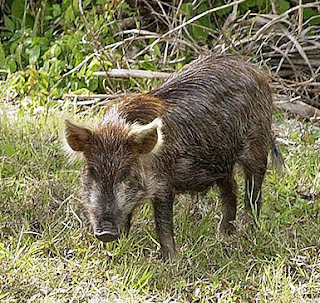 |
| King colobus |
Sunday, 27 February 2022
Leaf-eating Monkeys: Black-and-White Colobuses
Sunday, 20 February 2022
Miocene (Pt 31): Terror Mice and the First Howler Monkeys
 |
| Phoberomys |
Sunday, 13 February 2022
Are Animals Darker in the Tropics?
Crucially for this blog, it seemed to be true of the skin and hair of mammals as well. This observation raises a number of questions, of which the first is clearly "is it true?"
Sunday, 6 February 2022
How Dolphins Got Their Large Brains
By definition, an average mammal should have an EQ of 1. The formula breaks if we try to apply it to non-mammalian animals, such as birds, probably because their brain architecture is different from ours at quite a fundamental level. Even for mammals, there is some debate as to exactly what formula we should be using; most older studies have determined that brain size typically rises as the 2/3 power of body size (that is, as the cube root of the square) but a 2019 study argued that it's perhaps more accurate to base it on the 3/4 power and this seems to be a growing consensus.

